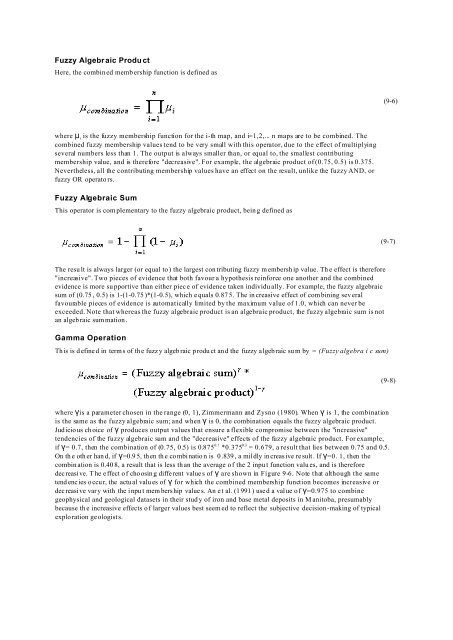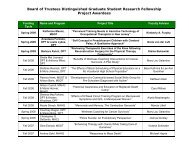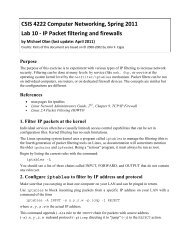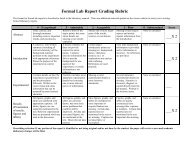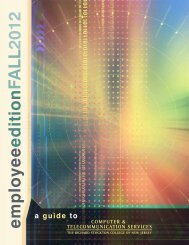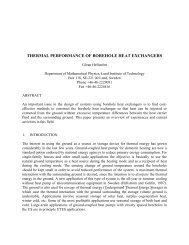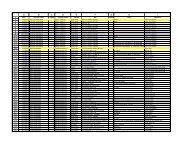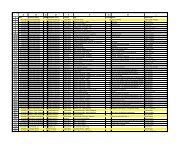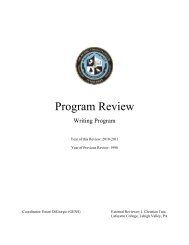Fuzzy Logic Method
Fuzzy Logic Method
Fuzzy Logic Method
Create successful ePaper yourself
Turn your PDF publications into a flip-book with our unique Google optimized e-Paper software.
<strong>Fuzzy</strong> Algebraic ProductHere, the combined membership function is defined as(9-6)where : i is the fuzzy membership function for the i-th map, and i=1,2,... n maps are to be combined. Thecombined fuzzy membership values tend to be very small with this operator, due to the effect of multiplyingseveral numbers less than 1. The output is always smaller than, or equal to, the smallest contributingmembership value, and is therefore "decreasive". For example, the algebraic product of (0.75, 0.5) is 0.375.Nevertheless, all the contributing membership values have an effect on the result, unlike the fuzzy AND, orfuzzy OR operato rs.<strong>Fuzzy</strong> Algebraic SumThis operator is complementary to the fuzzy algebraic product, being defined as(9-7)The resu lt is always larger (or equal to) the largest contributing fuzzy membership value. Th e effect is therefore"increasive". Two pieces of evidence that both favour a hypothesis reinforce one another and the combinedevidence is more supportive than either piece of evidence taken individu ally. For example, the fuzzy algebraicsum of (0.75, 0.5) is 1-(1-0.75 )*(1-0.5), which equals 0.875. The in creasive effect of combining severalfavourable pieces of evidence is automatically limited by the maximum value of 1.0, which can never beexceeded. Note that whereas the fuzzy algebraic product is an algebraic product, the fuzzy algebraic sum is notan algebraic summation .Gamma OperationThis is d efine d in terms of th e fuzz y algeb raic p rodu ct and the fuzzy algeb raic su m by = (<strong>Fuzzy</strong> algebra i c sum)(9-8)where (is a parameter chosen in the range (0, 1), Zimmermann and Zysno (1980). When ( is 1, the combinationis the same as the fuzzy algebraic sum; and when ( is 0, the combination equals the fuzzy algebraic product.Judicio us ch oice of ( produces output values that ensure a flexible compromise between the "increasive"tendencies of the fuzzy algebraic sum and the "decreasive" effects of the fuzzy algebraic product. For example,if (= 0.7, then the combination of (0.75, 0.5) is 0.875 0.7 *0.375 0.3 = 0.679, a result that lies between 0.75 and 0.5.On th e oth er han d, if (=0.9 5, then th e combinatio n is 0 .839 , a mildly in creas ive re sult. If (=0. 1, then thecombin ation is 0.408, a result that is less th an the average of the 2 input function valu es, and is thereforedecreasive. T he effect of choosin g different value s of ( are shown in Figure 9-6. Note that although the sametend encies o ccur, the actual valu es of ( for which the combined membership function becomes increasive ordecreasive vary with the inpu t mem bership value s. An e t al. (1991 ) used a value o f (=0.975 to combinegeophysical and geological datasets in their study of iron and base metal deposits in M anitoba, presumablybecause th e increasive effects of larger values best seem ed to reflect the subjective decision-making of typicalexploration geologists.


